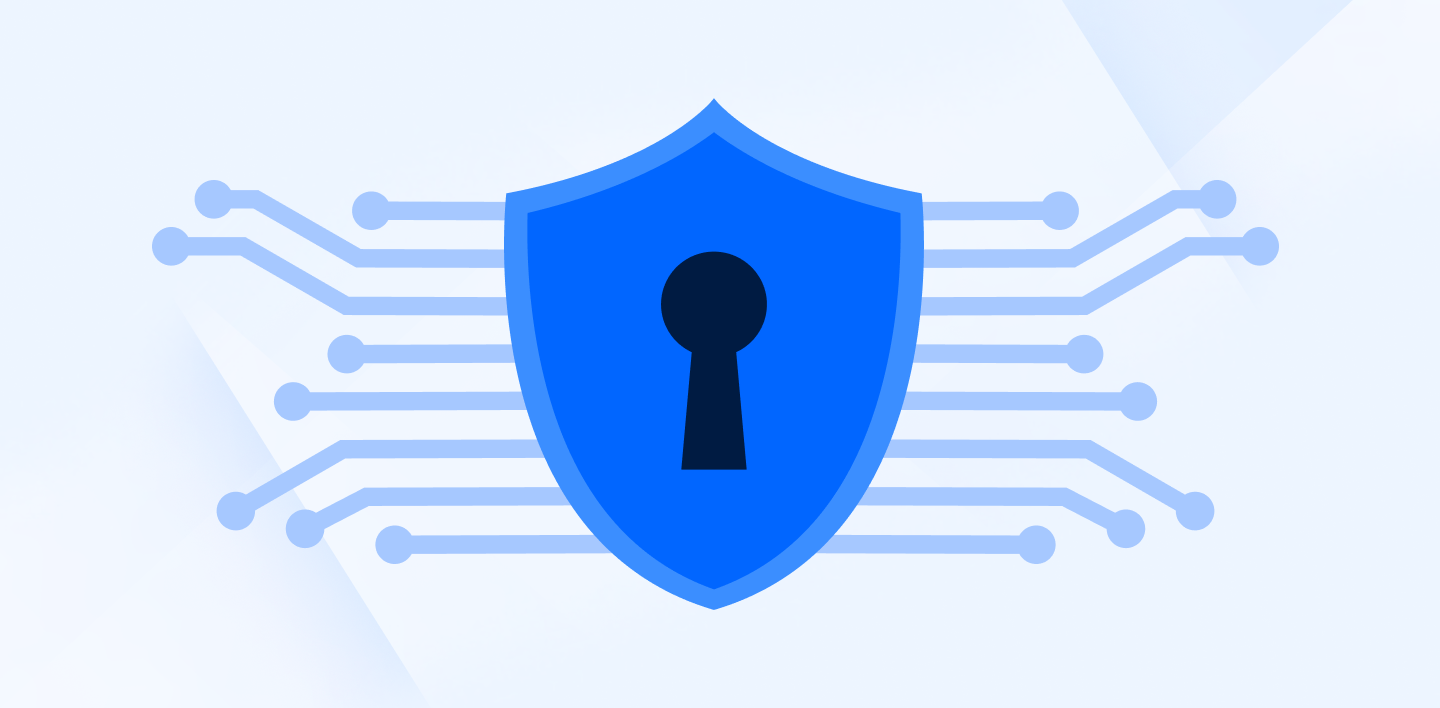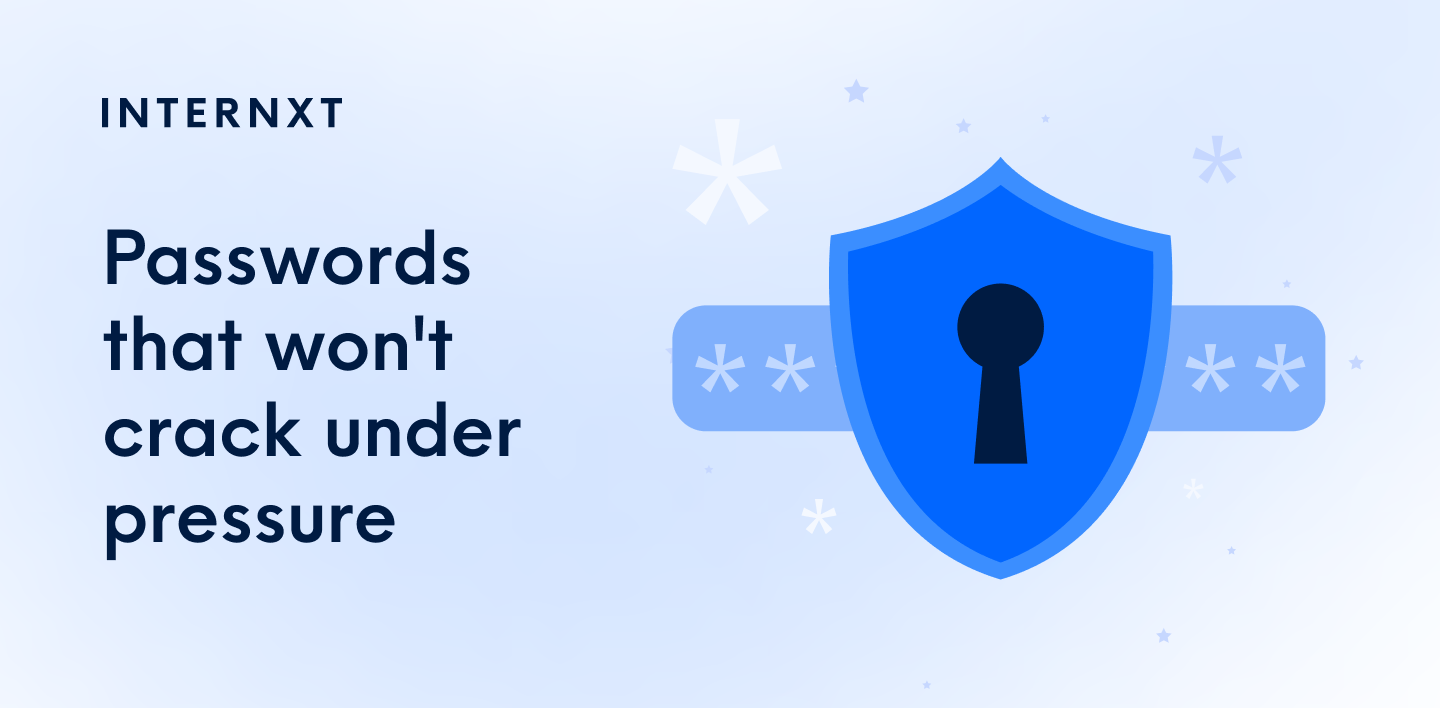What is Network Security? How to Stay Safe Against Data Breaches

According to IBM’s 2022 Data Breach Report, at least 42 million records were exposed due to data breaches between March 2021 and February 2022. Network security is a set of processes that protects a business from security incidents such as unauthorized access, data breaches, and any other malicious activities.
With the world’s increasing dependency on interconnected devices, ensuring that our devices and information are safe is vital.
What Is A Network?
A network is a collection of devices, such as computers, servers, routers, and switches, that are connected through physical cables or wireless mediums, enabling seamless communication and data exchange amongst the devices of the same ecosystem.
Consider an office where all computers feed into a shared server that stores and manages data - that’s a network. Now, a network can expand beyond the office, allowing people to share data globally and collaborate on projects remotely.
What Kind of Threats Are There to Network Security?
Networks are vulnerable to a wide array of threats, and understanding these threats is crucial to implementing effective scanning and counter-measures.
Some of the most common threats faced by networks include:
1. Malware:
Malware, or malicious software, includes viruses, worms, ransomware, and Trojan horses, which can infect individual devices or entire networks, leading to data breaches and unauthorized access.
2. Network Attacks:
This is a collective of various attacks that networks can suffer, such as Denial of Service (DoS) attacks, Distributed Denial of Service (DDoS) attacks, and Man-in-the-Middle (MitM) attacks. They can disrupt the availability of a network, overwhelm it with excessive traffic, or intercept and manipulate the communications taking place through the network.
3. Phishing and Social Engineering:
Phishing is one of the most common social engineering attacks. Like most cases of social engineering, attackers depend heavily on human interaction and often try to manipulate or coerce employees of your organization to share sensitive information such as passwords or make them download malicious software or corrupted files to gain access to your network and hence, data.
4. Data Breaches:
Data breaches occur when unauthorized individuals access sensitive and/or confidential data stored within a network. All of the above threats may lead to a data breach, which in turn leads to the exposure of information that may be personal or confidential.
5. Insider Threats:
Individuals within an organization can misuse their privileged access to steal data, sabotage systems, or compromise network security. Such insider threats may come from rogue/disgruntled employees, vendors, and contractors with malicious intent. Sometimes, even partners who wish to abuse their privileges for personal gain may become an insider threat.

6. Unauthorized Access:
When an attacker gains entry into a network without the necessary authentication or permission, it is called unauthorized access. It may be the result of weak or hacked passwords or vulnerabilities in the network security protocols. Unauthorized access may lead to theft of crucial data worth millions or worse forms of cyber attacks.
7. Wi-Fi Eavesdropping:
If a Wi-Fi network lacks proper data encryption, it becomes susceptible to a Wi-Fi eavesdropping attack, commonly known as the evil twin attack. As the name suggests, in an eavesdropping attack, hackers set up a fake Wi-Fi hotspot near popular locations like hotels or coffee shops, mimicking the real free public network.
Since most devices are programmed to connect to networks or sometimes even access points, they connect with the malicious network, allowing the hackers to monitor and intercept the various data packets transmitted through the network. Such an attack can quickly snowball and lead to all kinds of exposure, including but not limited to DNS hijacks, MitM attacks, and SSL stripping.
8. Accidental Exposure
The accidental or unintentional release of sensitive data by authorized individuals within an organization can incur hacks and penalties. It can happen through careless data handling, insecure file-sharing practices, or unauthorized information transfers outside the network.
9. Zero-day Vulnerabilities:
Zero-day vulnerabilities refer to new and emerging software vulnerabilities unknown to developers and vendors. Such attacks are called zero-day attacks because hackers can exploit such security gaps before a patch or fix is made available for the specific vulnerability.
10. Physical Security Breaches:
A physical security breach occurs when unauthorized individuals or groups access network infrastructure, such as servers, switches, or routers. Attackers may achieve it through unauthorized entry into secure areas, so you should encrypt USBs or hard drives to protect physical storage devices.
What Can Your Business Do to Protect Network Security Against Breaches?
The first step to protecting against data breaches is identifying if your email has leaked on the dark web. Employees should check if their work or personal email has leaked online using the Internxt free Dark Web Monitor tool. With it, you can identify whethere your email has been exposed in a data breach.
To safeguard against network breaches and cyber threats, individuals and teams should adopt the following proactive business or enterprise security measures which are part of the legal requirements of compliance laws such as HIPAA and GDPR to protect sensitive data.
1. Conduct Regular Security Audits:
Routine security audits can help you detect potential weaknesses in the network before they are exploited by malicious software or hackers. You can combine point-in-time audits with a thorough vulnerability scanner and pen testing partner to maintain a spotless network security posture.
2. Implement Robust Access Controls:
Access is the primary antithesis of security. It is something you cannot deny because data would be useless if no one had access to it, but it is also something that, if shared generously, can lead to disasters. Hence, controlling access is the best way forward. Businesses must follow the Principle of Least Privilege (PoLP) and grant access on a strict need-to-have basis.
You can use different authentication methods to prevent unauthorized access and implement access monitoring systems to understand which of your employees really needs access to specific network resources.
Revoking permissions is necessary when the need for a particular access has been met. Thus, the exposure can be limited even if an employee falls victim to a phishing attack. MFA (Multi-Factor Authorization) can also help mitigate the same.

3. Keep Your Network Security Software and Systems Updated:
If a software releases a patch to a known vulnerability and you still fall prey to it, chances are the attack was successful because you failed to update the software. As such, any attack that exploits that vulnerability is on you.
This goes for both network administrators and users. Nothing is a bigger no-no than running outdated applications on your network - it is like inviting hackers to break into your system. And guess what, they will!
Make updating and patching software, operating systems, and network devices a habit. In case immediate updates are not an option, create an allotted time regularly to ensure the same.
4. Use Firewalls and Intrusion Detection/Prevention Systems:
It is important to monitor the traffic that goes in and out of your network. It helps you thwart any suspicious or malicious packages, raise an alert if there is unusual activity on the network, and detect an intrusion before it is too late. Deploying firewalls, and intrusion detection and prevention systems (IDPS) can help you achieve the same.
5. Employ Secure Remote Access:
Some employees will likely access your network or transmit data to or from it remotely. It is essential to keep such connections private. Using a trustworthy VPN (Virtual Private Network) can help you secure remote access.
You can also control access by implementing architectural segmentation across the network. Each subnet acts as an independent network, giving security teams increased administrative power over the traffic that flows into their systems.
6. Encrypt Data:
Encrypting the data that is available through your network, as well as data that is transmitted through your network, can prevent attackers from stealing your data, even if they intercept it. Encryption helps you reduce the risk of unauthorized access and retain some sense of control.
7. Establish an Incident Response Plan:
With new emerging threats, even the best-laid plans may fall short. Work with security experts to create a security policy with an incident response plan. This involves identifying responsible personnel, delineating specific tasks, and creating a dedicated response committee, procedure, and write-up, which is to be followed step-by-step in the event of a data breach or any other similar security incident.
8. Make Regular Back Ups of Important Files:
In the event of network hijacking or data breach, your back-ups can give you a good chance of restoring your important files to the most recent version. Back up your data regularly to deal with network security incidents for greater peace of mind.
Common Network Security Vulnerabilities and Prevention Tips
Following is a brief summary of common network security vulnerabilities, the risks they present, and what steps you can follow to mitigate the effects.
Remote Code Execution
Ensure the ongoing security of your systems by consistently updating and patching software. Enhance your defenses further by deploying web application firewalls, which effectively identify and thwart potential attacks, ensuring a resilient security posture for your network.
SQL Injection
Elevate your security practices by employing parameterized queries or prepared statements for your database interactions.
Strengthen your defense strategy by utilizing a vulnerability scanner to conduct comprehensive security code reviews, swiftly identifying and addressing vulnerabilities in your systems. Your network's security is paramount, so this is one of the most important proactive measures you can take to maintain its integrity.
Cross-Site Scripting
Prevent malicious data from compromising your systems by validating user inputs and encoding the outputs. Additionally, employing a Content Security Policy (CSP) helps guard against cross-site scripting (XSS) attacks, further enhancing the safety of your web applications.
Denial of Service (DoS)
Enforce continuous traffic monitoring to identify and respond to potential attacks swiftly. Integrating network intrusion detection/prevention systems (IDPS) adds an extra layer of security, proactively detecting and neutralizing intrusion attempts.
Additionally, implementing load balancing and redundancy ensures high availability and safeguards against downtime due to unexpected failures, ensuring seamless operations even under duress.
Weak Encryption
Use encryption algorithms and protocols to protect your sensitive information from unauthorized access and breaches. Secure key management practices further bolster your defense, ensuring that access to encrypted data remains tightly controlled.
To avoid potential vulnerabilities, maintain a strict cyber hygiene routine of updating and patching encryption libraries and protocols. By doing so, you keep your encryption methods resilient against emerging threats and maintain a robust security posture.

Understanding and Implementing Network Security For The Future
With the ever-evolving technological landscape, network security has become integral to building cyber awareness. By understanding the vulnerabilities and implementing best practices, businesses like yours can fortify their networks and create a robust protective shield against these incidents.

